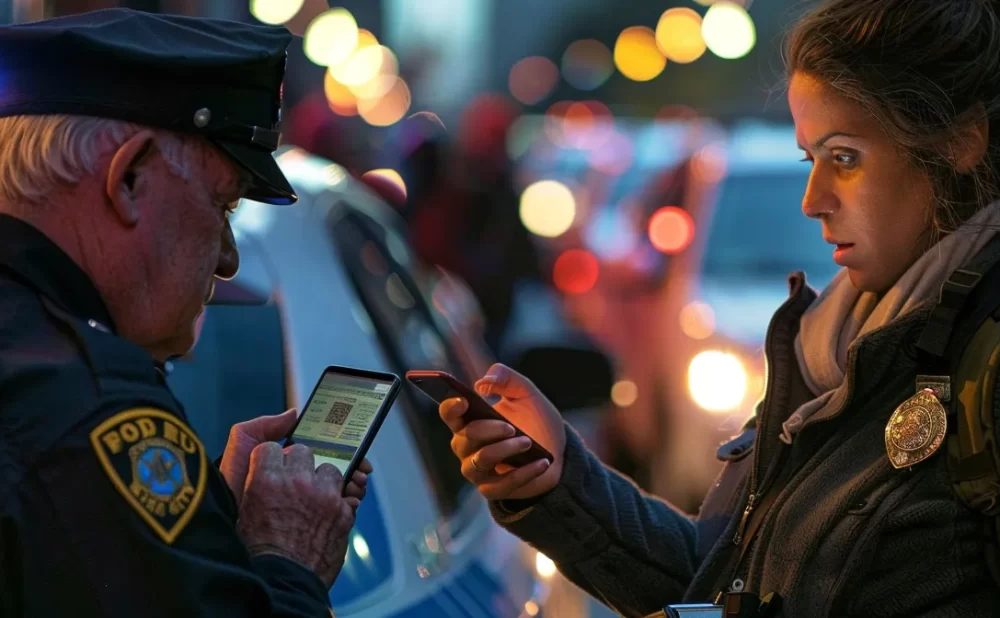Have you ever wondered about your rights if you’re involved in a ride-share accident while zipping through Texas’s busy streets? This post untangles the complex web of steps you should take as a passenger in the unfortunate event of an Uber or Lyft mishap. We will walk you through navigating the intricate insurance policies of these companies, articulate the crucial legal steps to follow post-accident, and guide you on how to calculate fair compensation for any injuries, from mental distress to catastrophic outcomes. If you’ve ever felt at risk as a ride-share user, this comprehensive guide is designed to equip you with the knowledge and confidence to protect your rights and ensure you’re never left at a disadvantage.
Understanding Your Rights as an Uber or Lyft Passenger in Texas
In Texas, passengers of Uber and Lyft are subject to a unique set of regulations and protections. This guide outlines your passenger rights under state law, details the safety and insurance policies of both ride-share companies, and distinguishes the nuances in their accident response procedures. Knowing whether your seat belt cut during a vehicle accident is covered by the company’s policy or if it falls on the insurance company is crucial. Understanding the Lyft claims process can empower you in the aftermath of an incident. Such insights are vital for anyone using these services in The Empire State.
Ride-Share Regulations Specific to Uber and Lyft
In Texas, when an unfortunate ride-share accident leads to a spinal cord injury, the legal landscape becomes particularly complex. Uber and Lyft have specific regulations that may affect the coverage of economic damages, such as medical expenses and lost wages. Victims might find that the ride-share’s insurance has a substantial deductible, which can significantly impact the financial resources required for recovery and rehabilitation. Hence, engaging an accident attorney experienced in handling such delicate cases can be a decisive step toward securing rightful compensation.
Furthermore, the Texas state laws governing ride-share services require these companies to maintain accident insurance policies with particular thresholds. This means that if you, as a passenger, suffer a spinal cord injury during a ride, there are pre-established coverage limits from the ride-share’s insurance that can be utilized before your personal insurance steps in. Understanding this interplay between personal and ride-share insurance coverages can be pivotal in streamlining the claims process and ensuring that you are not left negotiating complex legal and insurance jargon alone during a challenging time.
Passenger Rights Under Texas Law
In Texas, passengers involved in a Lyft car accident or an Uber crash are entitled to pursue accident settlements for injuries sustained. State law mandates that ride-share companies offer a high standard of passenger safety. In the case of an injury after a passenger car accident, victims are protected and have the right to seek compensation for their losses, which includes coverage for medical costs and related expenses. It is critical for passengers to understand that their well-being is legally safeguarded, and there are mechanisms in place to report accidents and receive the necessary support.
In the aftermath of a ride-share collision, Texas law provides clear avenues for passengers to receive just compensation. If a person sustains an injury during an Uber or Lyft car accident, it’s essential to notify the company immediately, allowing for a prompt investigation and swift action regarding their claim. In navigating accident settlements, passengers should be aware that Texas’s no-fault insurance system may influence how compensation is pursued, with a focus on rapid reimbursement for medical treatment and lost earnings regardless of who was at fault in the incident.
Uber and Lyft‘s Passenger Protection Policies
Uber and Lyft have developed passenger protection policies to address concerns related to traffic incidents and motor vehicle accidents in Texas. These policies ensure that passengers involved in a soft tissue injury or more severe damages are supported through their car accident settlement process. It is important for users to be aware that the ride-share platforms are obligated to provide insurance coverage which can be crucial in footing medical bills and other accident-related costs, making the recovery journey less burdensome.
In the event of a ride-share collision, the understanding of these protections can significantly impact the outcome for passengers. The coverage under Uber’s and Lyft‘s policies offers a layer of financial protection against expenses stemming from traffic accidents, emphasizing soft tissue damages and other common injuries. With this knowledge, passengers can navigate the claims process with more confidence, ensuring they receive the compensation they’re entitled to under Texas’s ride-share regulations.
Differences Between Uber and Lyft Accident Procedures
While both Uber and Lyft offer liability insurance to safeguard passengers, the procedures following an accident can differ slightly between the two companies. If involved in a Lyft accident, passengers must report the incident through the app or customer service to initiate the car accident claim process. In contrast, Uber’s process, while similar, may involve more direct communication with their safety team to address immediate concerns, including the intricate details involving loss of consortium claims.
The insurance provided by Uber and Lyft serves as primary liability insurance, offering protection even before personal insurance is considered. However, filing a car accident claim with Lyft might involve different documentation requirements or claim forms compared to Uber. It’s essential for passengers to familiarize themselves with each platform’s specific steps and required evidence to expedite the claims process and ensure all potential damages, from property loss to personal injury, are thoroughly addressed.

Immediate Actions for Uber and Lyft Passengers After an Accident
After a ride-share accident in Texas, immediate steps are crucial for the safety and rights of Uber and Lyft passengers. Ensuring personal well-being and swiftly reporting the incident can mitigate complications stemming from potential disabilities or psychological trauma. It’s essential to collect driver information, notify the respective ride-share company, seek prompt medical evaluation, and document all aspects of the event, including pain experienced and property damage. This action plan not only prioritizes safety but is foundational for a strong car accident case, providing the necessary evidence for comprehensive future claims.
Prioritizing Safety and Reporting the Accident
Following an Uber passenger accident, immediate action centered on safety is imperative. As law requires, contacting emergency services should be the first step if there are suspected injuries, addressing potential medical malpractice concerns from the outset. Passengers are also advised to remain calm and exhibit safe behavior while awaiting help, as this can provide a solid foundation for any necessary legal actions or trial proceedings.
Once the immediate safety concerns are addressed, reporting the incident to the ride-share company is equally critical. Passengers should use the app to inform Uber or Lyft of the accident to ensure a timely response. Detailing the event accurately aids the subsequent investigation and protects the passenger‘s rights as they navigate through the complex interplay of law, insurance claims, and potential trials that could follow a ride-share accident.
Collecting Essential Information From Drivers
In the unsettling moments following a rideshare accident, gathering essential details from your driver is a critical step that should not be overlooked. Prompt evaluation of the accident scene and requesting the driver’s contact and insurance information ensures that you have the necessary data when filing a claim for any injuries, such as a headache or more serious consequences from a slip and fall or motor vehicle accident. This crucial evidence aids in accurately attributing responsibility and effectively navigating the post-accident legal process.
While coping with the initial shock of a rideshare collision, passengers must also inquire about the ride detail summary from the app, which is particularly important in the documentation process. This summary provides a clear record of the trip and aids in validating the occurrence of the incident, which is indispensable if injuries manifest later on, a common scenario with conditions like headaches that may not present immediate symptoms. This step is not just about preparedness; it’s about safeguarding your rights and facilitating a smoother recovery journey.
Notifying Uber or Lyft About the Incident
Notifying Uber or Lyft about an accident is a critical step for car accident victims in Texas. It sets in motion the companies’ support systems and begins the process toward a possible Lyft settlement or Uber insurance claim. Passengers should report the incident promptly through the respective app, ensuring that all details are documented, which is indispensable for emergency response and potential legal proceedings. This action facilitates accessibility to the companies’ accident attorneys who specialize in navigating the complexities of ride-share accident claims.
For passengers dealing with the aftermath of a ride-share accident, swift notification can be vital not only for their safety but also for securing their rights. The process should include a thorough account of the incident, supporting the claim with evidence from the scene. This information is crucial when working with accident attorneys to pursue fair compensation. It also reinforces the record-keeping that can be pivotal in disputes or insurance settlements, as quick and accurate reporting demonstrates diligence and helps maintain the integrity of the narrative for car accident victims.
Seeking Medical Evaluation Promptly
Seeking medical attention swiftly after a ride-share accident is critical, particularly for injuries that might not be immediately apparent, such as those to the knee or ankle. Not only is an early medical evaluation essential for health and recovery, but it also serves as foundational documentation should a settlement be pursued for injuries caused by the accident. Promptly visiting an emergency room or a nursing home ensures that health care professionals record all pertinent details of the injury, which can be beneficial during the claims process.
Even when injuries seem minor, the physical impact of a sudden stop or collision can lead to long-term repercussions, making immediate medical assessment crucial. For instance, if the crash caused whiplash or a sprain, failure to obtain a timely evaluation may complicate proving that the incident was responsible for the injury, especially given the complexities of establishing fault. This evidence is indispensable when negotiating with insurance companies or involved parties to ensure victims receive adequate compensation for medical expenses and related damages caused by the accident.
Documenting the Accident for Future Claims
Documenting every facet of a ride-share accident is crucial, especially when severe injuries like amputation are involved. Accurate accident records serve as the backbone of a strong injury claim, as insurance coverage often hinges on the specifics of such documentation. It’s vital for passengers to note every pertinent detail, from the sequence of events to their immediate injuries, which paves the way for a comprehensive and substantiated insurance claim.
Attention to detail can make a significant difference when it comes to securing fair compensation. For passengers, retrieving a police report, capturing photos of the accident scene, and obtaining eyewitness accounts can offer irrefutable support for their injury claims. This evidence is indispensable for proving the extent of injuries and linking them directly to the accident, thus reinforcing the passenger‘s case when seeking rightful insurance coverage.

Navigating Uber and Lyft‘s Insurance Policies
After a ride-share collision in Texas, understanding how to navigate Uber and Lyft‘s insurance policies becomes critical for passengers who sustain injuries. This section explains the layers of protection provided by these companies, explores when ride-share insurance comes into play, and walks you through the steps of filing an insurance claim. It also addresses the more complex scenarios passengers may face, including stress from court proceedings and navigating a car accident lawsuit, especially when a truck driver or other parties are involved. Our aim is to offer practical insights, so you are equipped with the knowledge to handle these situations with confidence.
Understanding Uber’s Insurance Coverage for Passengers
Passengers seeking claim compensation from Uber after an accident may benefit from understanding that the company’s insurance coverage operates on multiple levels. If injuries occur, such as those from a dog bite or a need for therapy, insurance may cover medical expenses. Time is of the essence, however, as the statute of limitations in Texas can affect the passenger‘s ability to file an accident lawsuit.
In the event of a ride-share incident, it’s imperative for affected passengers to promptly report the claim to Uber to ensure eligibility for compensation. Uber’s policy includes specific provisions for various types of injuries, which means that passengers injured during a ride have a clear path to seek financial support for therapy or treatment that may follow a traumatic experience, ensuring the accident does not lead to undue financial strain.
Lyft‘s Insurance Policies Explained
Lyft‘s vehicle insurance policies provide essential coverage for ride-share users involved in accidents. The company maintains a robust insurance plan that may cover a variety of unfortunate scenarios – from an accident passenger suffering injuries to a pedestrian involved in a crash with a Lyft vehicle. In these instances, it’s important to remember that the success of an insurance claim or potential lawsuit against the ride-share service often hinges on immediate and accurate reporting of the incident and injuries sustained.
For those caught in an accident while using Uber or Lyft, the insurance policy details become significantly relevant when injuries or damages occur. Lyft specifically offers contingent liability coverage, meaning passengers, pedestrians, and other affected parties have a potential layer of financial protection against the costs associated with an accident. Understanding these provisions is critical for passengers to initiate the recovery of losses promptly and to navigate the legal complexities should a lawsuit arise.
When the Ride-Share Company’s Insurance Applies
The insurance provided by ride-share companies like Uber and Lyft becomes applicable the moment a passenger enters the vehicle until the ride’s conclusion. In the event of a car accident, the ride-share company’s commercial insurance typically takes precedence, offering coverage for damages and potential anguish resulting from the incident. Passengers should be ready to document their experience and collect evidence at the scene, ensuring their capacity to furnish necessary details during the insurance claim process.
If a collision occurs, contractual stipulations outlined in the insurance policies of Uber and Lyft dictate the coverage for passengers. The requirement to report any injuries or damages immediately following an accident is essential for the protection of the passengers’ rights. This ensures that the evidence collected is relevant and timely, contributing to a stronger case when seeking compensation for the trauma faced due to the car accident.
Steps to File an Insurance Claim With Uber or Lyft
Initiating an insurance claim with Uber or Lyft after a motor vehicle incident is a pivotal step towards compensation. First, report the accident through the app or contact customer service immediately to maintain the statute timeline. Highlight whether reckless driving contributed to the event or if other factors were involved. This early negotiation with the ride-share’s insurance representatives sets the stage for your claim, emphasizing the necessity to address any loss of income or injuries sustained.
Gather and submit all related documentation, which includes but is not limited to photos from the accident scene, a copy of the police report, and medical records, to support your insurance claim. This evidence is essential for proving the extent of your damages and for the insurance adjusters to evaluate your case properly. Timely and thorough documentation after an Uber or Lyft accident ensures your rights are protected, and helps facilitate the insurance claim process as you recover from the incident.
Dealing With Complex Insurance Situations
Passengers entangled in the complexities of a car crash involving Uber or Lyft face unique insurance challenges that require strategic navigation. When a personal injury goes beyond the coverage of a standard Uber accident claim, it’s paramount to dissect the multi-layered insurance framework. Knowledge of when the ride-share insurance ends and personal insurance begins can leverage a passenger‘s position in securing comprehensive compensation for their losses.
For those involved in a Lyft insurance claim, understanding the nuances between personal insurance policies and the ride-share company’s coverage is vital. A car crash that results in catastrophic damages may entail negotiations with multiple insurance carriers. This is where professional legal guidance proves crucial, providing passengers the means to elucidate the fine print of policies and ensure their rights are upheld amidst the intricate process of an Uber accident claim.

Legal Steps for Ride-Share Accident Passengers
Navigating the aftermath of a ride-share accident in Texas can become complex when determining liability and seeking compensation. This section delves into critical legal steps including deciphering fault under comparative negligence rules, initiating personal injury claims against negligent drivers or third parties, and understanding the intricacies of a Lyft car accident passenger settlement. It also highlights the importance of observing Texas’s statutory deadlines for legal action and the role of an attorney in advocating for passengers with losses, potentially as severe as paralysis. Each topic provides practical insights into the integration of health insurance and the responsibilities of the limited liability company operating the ride-share service.
Determining Liability in Ride-Share Accidents
Establishing liability after an Uber car accident in Texas is a multilayered process, integral to securing fair compensation for accident injuries. The investigation encompasses a review of the ride-share driver’s actions, the other vehicles involved, and the circumstances leading up to the crash to ascertain fault. In cases where liability is disputed, mediation or a court verdict may be required to resolve the matter. This thorough examination ensures that all parties responsible are held accountable, facilitating a just outcome for those injured.
When determining fault in a ride-share accident, the evidence collected immediately after the incident is crucial in piecing together a comprehensive picture of the events. Should the case advance to court, the strength of this evidence can significantly influence the verdict, shaping the determination of liability. For those who have sustained accident injuries, this step is paramount as it impacts the level of compensation they may receive, emphasizing the importance of timely and accurate reporting post-collision.
Filing a Personal Injury Claim Against Drivers or Third Parties
If an Uber or Lyft ride in Texas takes an unfortunate turn with a car accident resulting in a sprain, burn, or any other injury, passengers should know the process of filing a personal injury claim against the responsible driver or other third parties. Filing a complaint initiates the formal legal pursuit for compensation due to loss of health or damage to property, ensuring the victim’s rights for reparation are forefront.
During a jury trial for a ride-share related accident, evidence that substantiates the extent of a passenger‘s injuries, including proof of sprains or burns, becomes instrumental in achieving fair compensation. It’s essential for the passenger to understand that meticulous documentation of their injuries and property damages can profoundly influence the litigation’s outcome, guiding the jury towards a verdict that accurately reflects the harm suffered.
Pursuing a Lyft Car Accident Passenger Settlement
When a passenger in Texas has been involved in an accident while using Lyft, taking steps towards securing a passenger settlement is crucial. Such settlements often take into account not only the immediate physical injuries but also the impact on the passenger‘s quality of life. If the Lyft driver was driving under the influence, it might constitute a breach of contract with the passenger, possibly complicating the lawsuit but potentially increasing the settlement value. The passenger‘s testimony, supported by medical records and other evidence, plays a pivotal role in the success of their claim.
In the maze of legal proceedings that follow a ride-share collision, passengers may find themselves seeking compensation for harms suffered due to a driver’s negligence or breach of duty. New Jersey, much like Texas, enforces laws that protect passengers, ensuring they receive compensation to support recovery and mitigate the impact on their life quality. Understanding these rights and working with legal counsel experienced in such cases can lead to a settlement that addresses the comprehensive spectrum of losses, from physical to emotional, ensuring justice is served.
Time Limits for Legal Action in Texas
In the wake of a ride-share collision in Texas, it is imperative for passengers to be mindful of the state’s statute of limitations for legal action. If an accident results in injuries—whether from an airbag deployment causing neck trauma or wage loss due to recovery time—it’s crucial to file a claim within the specified timeframe. Texas law generally allows for three years from the date of the accident to pursue a personal injury lawsuit against the responsible parties.
This time-bound window is essential for passengers to secure compensation from auto insurance policies or ride-share companies for medical treatments, including those provided by nursing professionals. Acting promptly not only ensures adherence to legal deadlines but also facilitates the collection of fresh evidence and testimonies that can fortify a claim. Thus, passengers should prioritize consulting with a legal expert soon after an accident to protect their rights and navigate the legal process effectively.
How an Attorney Can Assist in Your Case
An attorney skilled in handling Uber car accident passenger cases can offer invaluable assistance in navigating the complex legal pathways to secure compensation. Their expertise enables a plaintiff to accurately quantify the damages sustained from an auto accident, ensuring every aspect of their claim is meticulously documented and presented. This legal counsel is critical in boosting the passenger‘s chance of receiving a fair and comprehensive settlement for their injuries and associated losses.
Engaging an attorney after an Uber car accident in Texas provides immediate support in deciphering the intricate terms of applicable auto insurance policies and asserting the plaintiff‘s rights. By implementing shrewd negotiation tactics and leveraging an in-depth understanding of state laws, legal representation can be instrumental in challenging any attempts by involved parties to undervalue the plaintiff’s damages, thereby enhancing the potential for a favorable resolution.

Calculating Compensation for Ride-Share Accident Injuries
Calculating compensation following a ride-share accident is a complex, yet crucial process for passengers in Texas. It entails considering medical expenses for injuries, potentially involving the leg, and projecting future care costs. Lost wages and the impact on earning capacity are also calculated, along with pain and suffering, which are significant components of a personal injury lawsuit. Claims adjusters examine various factors influencing settlement amounts, while examples of Uber and Lyft passenger settlements provide context and insight into potential outcomes. This section digs into the elements that shape compensation and guides passengers on what to expect during a claim.
Medical Expenses and Future Care Costs
In the aftermath of Uber accidents in Texas, passengers may face soaring medical expenses and the potential need for ongoing care. Precisely calculating these costs is vital in personal injury cases, ensuring that settlements encompass both current treatments and anticipated future medical needs, such as long-term medication and rehabilitation. Their rightful compensation will often reflect the severity of their suffering and the continuity of care required for a full recovery.
An adept attorney will work to ensure that every Texas passenger in a ride-share accident is justly remunerated for exhaustive medical bills, from emergency services to subsequent therapies. Evaluating costs often involves scrutinizing medical records and working with health care providers to forecast future care expenses. Serving as a crucial witness, medical professionals can solidify claims with their testimony, reinforcing the need for a comprehensive settlement that covers the totality of the individual’s physical and financial distress.
Lost Wages and Impact on Earning Capacity
One critical aspect of any accident settlement in Texas involves the reimbursement for lost wages due to the inability to work post-accident. For passengers injured in ride-share incidents, whether due to drunk driving or an assault, a vital component of the compensation calculation is the income lost during recovery. The assessment encompasses not only immediate lost earnings but also the potential impact on their future earning capacity, ensuring that the settlement reflects the gravity of the accident‘s disruption to their livelihood.
In instances where passengers have endured severe injuries, the duty of care breached by ride-share services could lead to long-term or permanent loss of earning ability. Their compensation should account for this economic setback. When calculating an accident settlement, legal professionals diligently factor in the progression of the victim’s career, including promotions and raises they might have reasonably expected, to ensure a fair settlement that addresses the full extent of financial losses from the incident.
Pain and Suffering Considerations
Quantifying pain and suffering after a car accident injury is a challenging yet essential part of pursuing uber accident claims in Texas. This non-economic damage compensates for the physical pain and emotional distress not reflected in medical bills. Evaluating pain and suffering often requires a detailed look at how the injuries have disrupted a person’s daily life and long-term well-being, which an experienced attorney can assist with to build a strong case.
In situations where the other party is found liable for the accident, the pain and suffering component of a claim goes beyond the immediate injuries to address the lasting impact on the victim’s quality of life. The degree of pain and suffering is unique to each individual and calls for a personalized evaluation to ensure that compensation in Uber accident claims reflects the true toll of the accidents. This careful consideration brings solace to victims as they navigate the aftermath of a traumatic experience.
Factors Influencing Settlement Amounts
The complex legal framework surrounding truck accidents or wrongful death claims in Texas can heavily influence settlement amounts in ride-share accident cases. Factors such as the degree of fault, recognized under Texas’s comparative negligence law, and the severity of damages play crucial roles. When evaluating compensation, the jury considers the extent of the victim’s injuries, the need for physical therapy, and whether the ride-share accident led to long-term disability or a wrongful death claim.
Settlement negotiations for ride-share accidents also take into account the cost of ongoing medical care, including physical therapy, which can be substantial. An injury requiring extensive physical therapy can lead to increased compensation, reflecting the time, expense, and effort involved in the victim’s recovery journey. Additionally, insurance adjusters and legal counsel meticulously assess the accident reports and analyze which party was at fault to determine the equitable distribution of liability and subsequent compensation.
Examples of Uber and Lyft Passenger Settlements
When a lawyer examines historical settlements involving Uber and Lyft passengers, they often find that compensation correlates significantly with the circumstances of each unique case. For instance, a passenger who was in a vehicle at an intersection when a collision occurred might receive a settlement that reflects the severity of injuries and the extent of the driver’s negligence. An attorney can provide context to these settlements, illustrating how factors like medical severity and impact on daily life play critical roles in the settlement valuation process.
In Texas, settlements from ride-share accidents can serve as a benchmark for passengers currently seeking representation. Successful claims managed by seasoned lawyers often underscore the complexities of negotiating with large ride-share companies. For instance, an attorney may reference a case where a vehicle operated by a Lyft driver resulted in a multi-vehicle collision, leading to substantial passenger injuries and a significant settlement that covered a wide spectrum of damages, offering useful insight for similar cases.

Tips for Protecting Your Rights as a Ride-Share Passenger
In the wake of a ride-share accident, safeguarding your rights as a passenger requires astute awareness and action. Avoiding common mistakes post-incident, such as in cases involving fall accidents or product liability, is vital. Effective communication with insurers and ride-share companies, along with understanding Texas’s no-fault insurance laws, can significantly impact the outcome of your insurance policy claims. Engaging legal representation familiar with contributory negligence and premises liability can ensure your voice is heard. This section offers practical advice on navigating these complexities and highlights the resources available for ride-share accident passengers.
Avoiding Common Mistakes After an Accident
After a ride-share accident, a common blunder passengers make is neglecting to document the incident thoroughly, a critical error that can lead to unnecessary expense and complications when injured. Texasas ride-share data, the driver’s information, and witness accounts. It’s this information that fortifies an Uber accident claim, enabling an accurate narrative of events for legal proceedings.
In the chaos that often follows a collision, ride-share passengers—especially those engaged in cycling or other street activities at the time—may overlook immediate medical evaluation, jeopardizing their health and claim validity under personal injury law. Individuals involved in an Uber accident in Texas should seek a medical assessment without delay, as this creates an official record of any injuries and connects them directly to the accident, a step that’s as protective as it is prudent.
Communicating Effectively With Insurers and Ride-Share Companies
Effective communication with insurance adjusters after a ride-share accident is essential to safeguarding your rights. As a passenger who potentially suffered shoulder injuries or any other harm at the accident scene, it is important to provide a clear and factual account of the event. Personal injury protection coverage through ride-share companies may respond to these kinds of injuries, and informing adjusters accurately can streamline your claims process.
Demonstrating an understanding of the terms of your personal injury protection policy can play a critical role in discussions with insurers and ride-share companies. Upon submitting your claim, ensure that all details, from the specific injuries to the accident scene conditions, are thoroughly documented. This could involve presenting evidence like the ride-share driver’s license and insurance information, which will not only clarify proceedings but also assist in securing the compensation to which you’re entitled.
Importance of Legal Representation
In the complex aftermath of a car accident involving ride-share services in Texas, having legal representation can significantly heighten a passenger‘s ability to navigate the claims process and potentially secure punitive damages. An adept lawyer can offer support if the incident involves scenarios like a hit and run, ensuring that the passenger‘s interests are vigorously protected, and the appropriate parties are held responsible. This is especially crucial when immediate legal decisions need to be made, such as when an ambulance is required at the accident scene, and a passenger‘s medical and legal needs intersect.
Attorneys experienced in Texas’s ride-share accident cases can greatly influence the outcome of car accident claims, advising on the fine line between personal injury claims and the pursuit of punitive damages. Legal counsel ensures that the passenger‘s rights are preserved throughout the legal proceedings, including interactions with insurance companies and law enforcement. Their guidance is invaluable in ensuring passengers receive the necessary support and compensation for their injuries and associated costs, providing a clear path to justice after such traumatic incidents.
Understanding Texas’s No-Fault Insurance Laws
Texas’s no-fault insurance laws simplify the process of obtaining reimbursement for medical bills and lost wages after a ride-share accident, without the need to prove which party was at fault. This statutory system allows passengers to receive prompt payment for essential recovery costs using PIP (Personal Injury Protection) coverage, which can include a fee for medical services and compensation for lost earnings due to the accident.
Ride-share passengers should grasp that regardless of how the collision occurred, they’re entitled to file a no-fault insurance claim to cover immediate economic losses. They must file this claim with the appropriate insurance carrier—typically the one providing the ride-share vehicle‘s no-fault policy—within a designated time frame to avoid fee penalties or claim denials, ensuring their rights are not forfeited due to procedural oversights.
Resources Available for Accident Passengers
Ride-share passengers in Texas have access to a range of resources tailored for support and guidance post-accident. Whether seeking legal advice, understanding insurance policies, or finding medical care, organizations such as the Texas State Department of Motor Vehicles and local non-profits provide critical information. They serve as an invaluable asset for passengers who need to grasp their rights and available remedies after experiencing a ride-share incident.
In addition to government and non-profit resources, ride-share companies also offer specific assistance channels for accident passengers. These digital platforms and customer service teams can guide individuals through the process of reporting the incident and initiating claims. A dedicated support team equipped to address the concerns of accident victims allows passengers to swiftly navigate the post-accident landscape, ensuring their rights are maintained, and their needs are promptly addressed.
Conclusion
Ride-share passengers in Texas should be acutely aware of their rights, ensuring they are well-protected in case of an accident. Understanding the insurance policies of Uber and Lyft, as well as the legal avenues available, is essential for claiming compensation effectively. Taking immediate and appropriate actions post-accident not only safeguards passengers’ health and legal rights but also sets a foundation for a strong case. In the fast-paced streets of Texas, empowerment comes with knowledge, making this comprehensive guide a crucial tool for anyone utilizing ride-share services.





